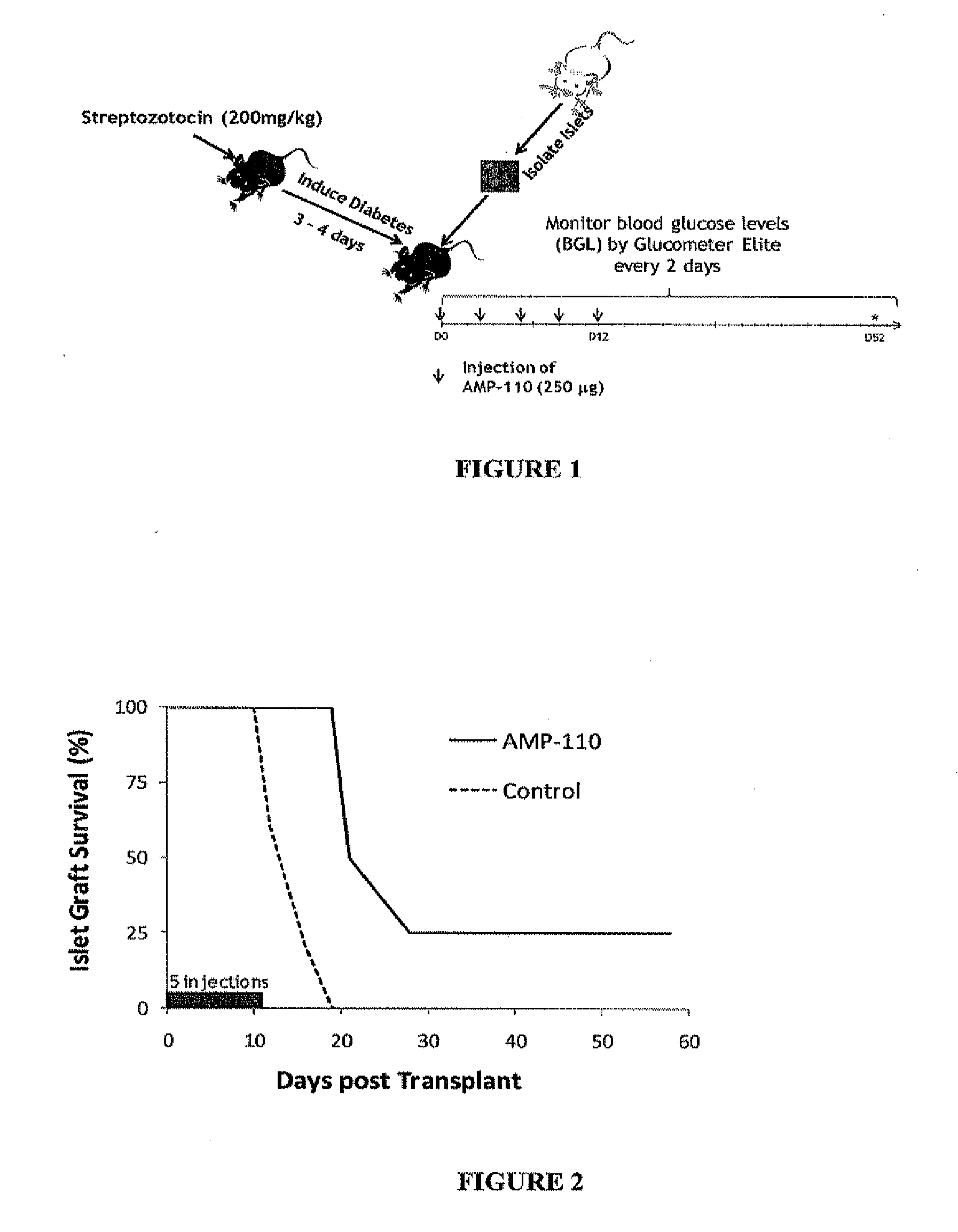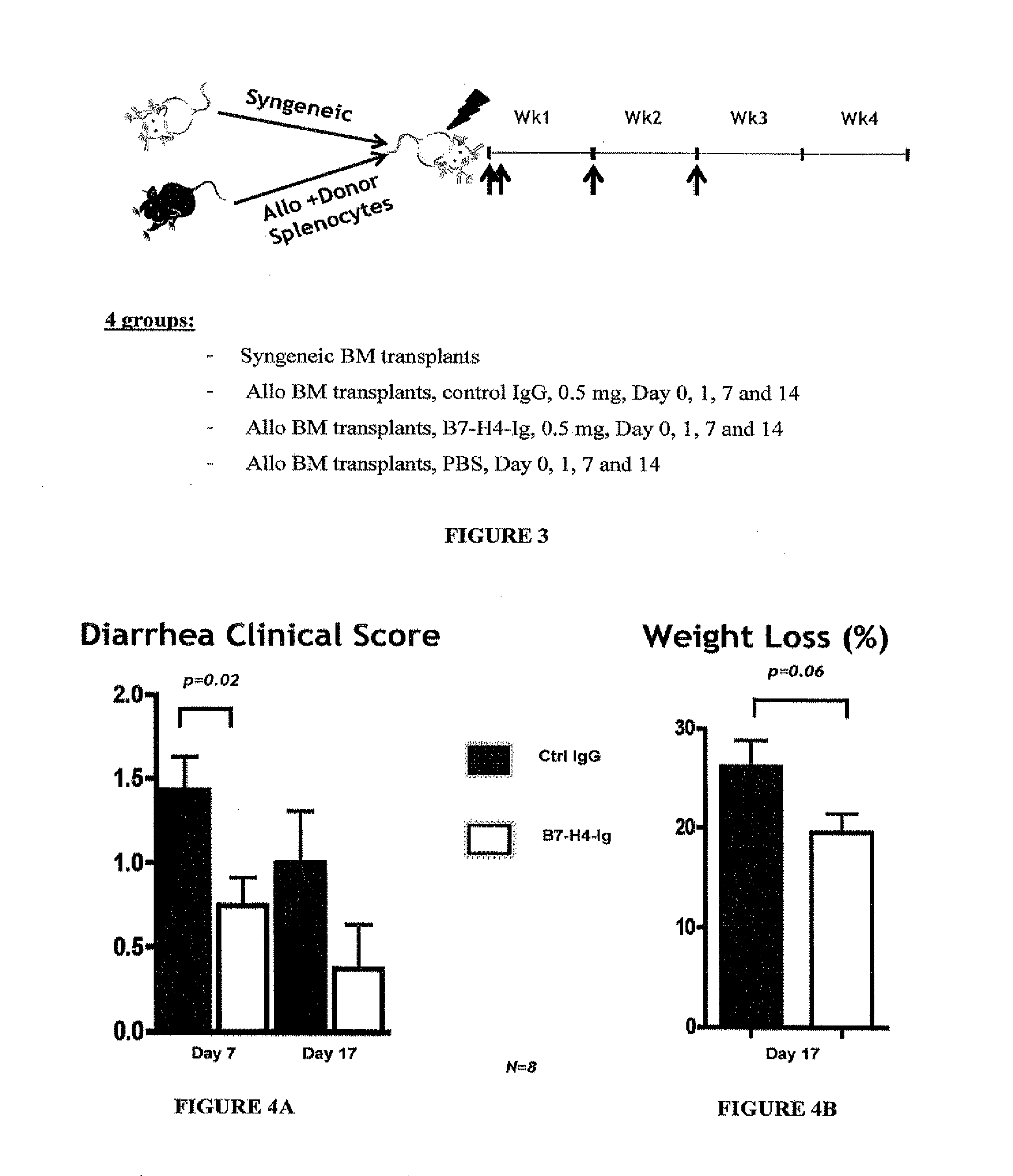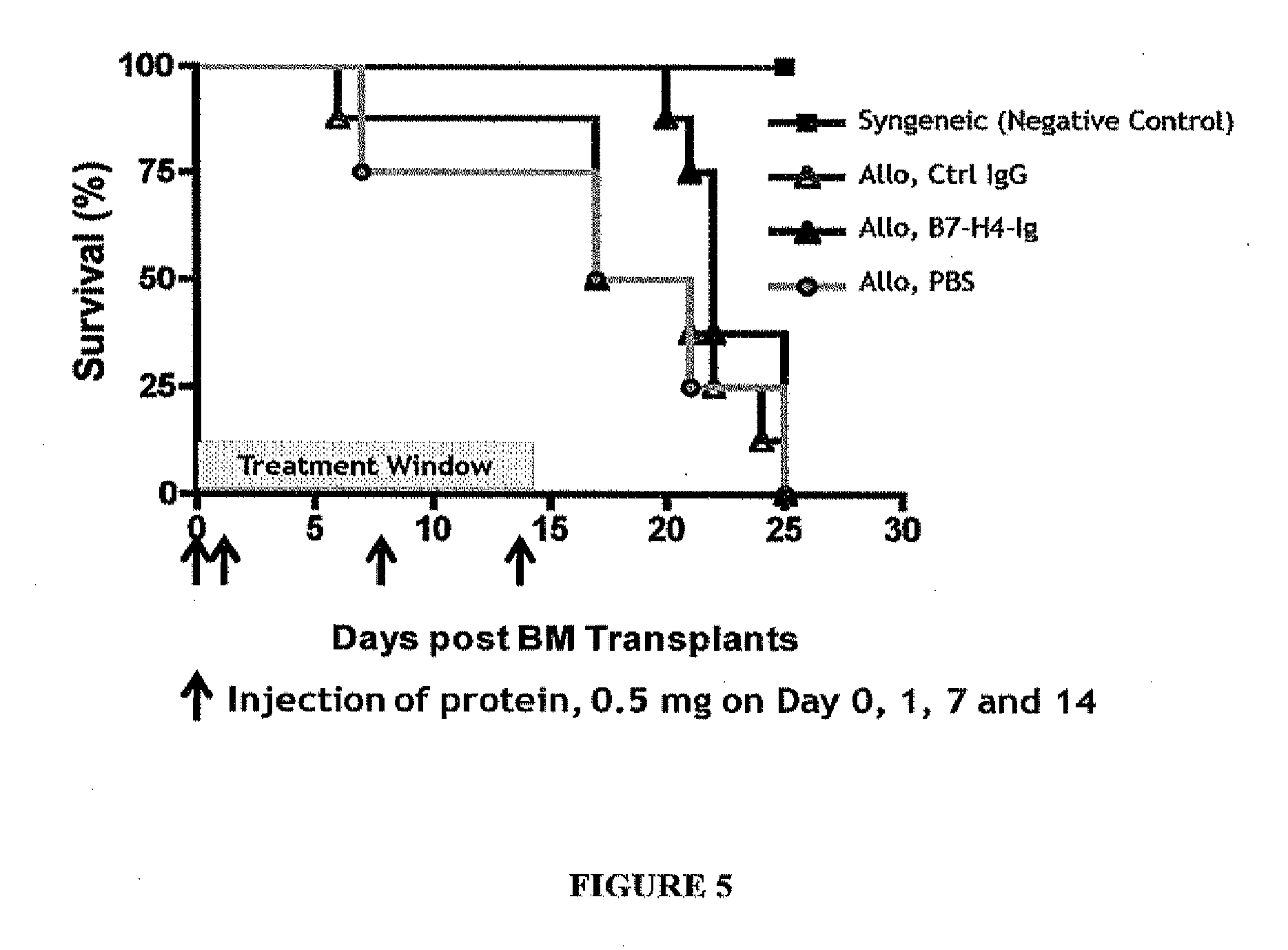Methods and compositions for the inhibition of transplant rejection
a technology of insulin-producing cells and compositions, applied in the field of immunology, can solve the problems of loss of biological functioning or death of the transplanted organ, other severe toxic side effects of the transplant recipient, and impediment to long-term graft survival, so as to inhibit or reduce the transplant rejection of insulin-producing cells, inhibit or and reduce the chronic transplant rejection
- Summary
- Abstract
- Description
- Claims
- Application Information
AI Technical Summary
Benefits of technology
Problems solved by technology
Method used
Image
Examples
example 1
Effect of B7-H4-Ig in Allogeneic Islet Graft Transplantation
[0335]An allogeneic transplant model of C57BL / 6 (B6) mice as recipients and BALB / c mice as islet donors were used to study the in vivo effects of B7-H4-Ig in prolonging islet graft survival of transplant recipients. Female 136 mouse recipients (n=4) were rendered diabetic by i.p administration of streptozotocin (STZ, 200 mg / kg), a widely used drug that is specifically toxic to islet cells and results in a permanent state of hyperglycemia. After STZ injection, the mice were tested for blood glucose level (BGL) by Glucometer Elite and signs of diabetes. Two to three days after STZ administration, 86 mice demonstrating signs of diabetes were used as transplantation recipients. Islet cells for allogeneic transplantation were isolated from pancreata of 8- to 10-week-old BALB / c donor mice by collagenase digestion (donor pancreata was perfused in bile situ through the common duct with collagenase), followed by separation on a disc...
example 2
B7-H4-Ig Increase Survivability in an Allogenic Transplant Mouse Model of GvHD
[0336]Transplantation and Treatment Protocol
[0337]Recipient Balb / C mice were lethally irradiated with a dose of 8.4 Gy and were reconstituted within 4 hours with a single intravenous inoculum of either 5×106 allogeneic bone marrow (BM) cells from C57B / 6+spleen cells (1.5×107) or 5×106 syngeneic bone marrow cells. To avoid bias from cage-related effects, animals in different groups were randomized between cages. Four groups of mice were given included. Group I was a syngeneic BM transplant that BM cells from Balb / C mice were transferred to Balb / C mice and served as a negative control. Group II was an allogenic bone marrow transplant in which control IgG (0.5 mg) was administered on Day 0, 1, 7 and 14. Group III was an allogenic bone marrow transplant in which B7-H4-Ig (0.5 mg) was administered on Day 0, 1, 7, and 14. Group IV was allogenic bone marrow transplants treated with phosphate buffered saline (PBS)...
PUM
| Property | Measurement | Unit |
|---|---|---|
| time | aaaaa | aaaaa |
| percent weight loss | aaaaa | aaaaa |
Abstract
Description
Claims
Application Information
 Login to View More
Login to View More - R&D
- Intellectual Property
- Life Sciences
- Materials
- Tech Scout
- Unparalleled Data Quality
- Higher Quality Content
- 60% Fewer Hallucinations
Browse by: Latest US Patents, China's latest patents, Technical Efficacy Thesaurus, Application Domain, Technology Topic, Popular Technical Reports.
© 2025 PatSnap. All rights reserved.Legal|Privacy policy|Modern Slavery Act Transparency Statement|Sitemap|About US| Contact US: help@patsnap.com



